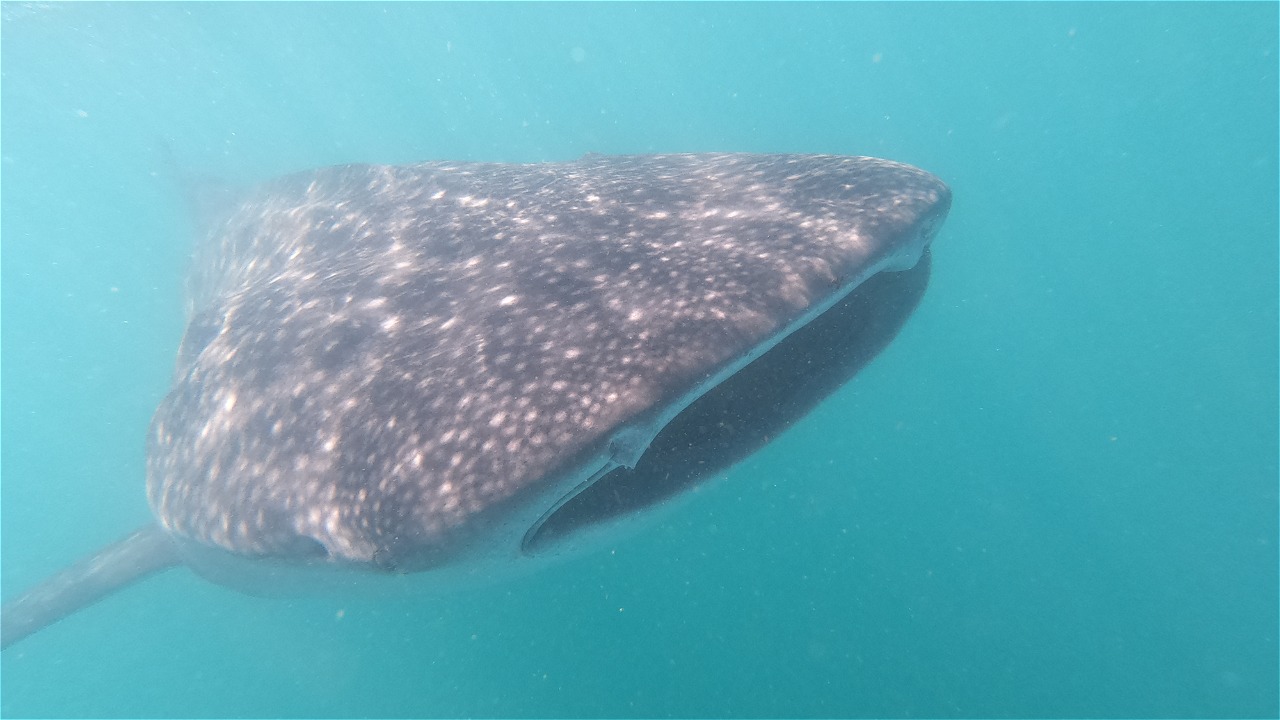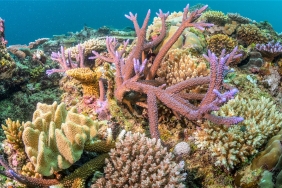ANOTHER PERSPECTIVE BEHIND THE APPEARANCE OF WHALE SHARKS IN GORONTALO
By: Casandra Tania (Marine Species Officer WWF-Indonesia) and Mahardika Rizqi H (Project Leader, Whale Shark Indonesia)
Research conducted from April - November 2016 identified 19 individual whale sharks that visited Botubarani Village, Kabila Bone Sub-district, Bone Bolango Regency, Gorontalo. All individuals were identified as male with a total length between 3 - 7 meters. Analyzing the pattern of whale shark occurrence in Gorontalo is not easy. The assumption that feeding by tourists and shrimp factory activities affect the appearance of whale sharks needs to be studied further.
The appearance of whale sharks went viral on social media since March 2016 after several tourists showed off their tourist activities. However, whale sharks disappeared from Gorontalo waters in mid-August 2016. There was no significant change in the total number of shrimp skins and heads removed. Where did the whale sharks go? The abundance of food in other areas is thought to be the reason for whale sharks to leave Botubarani.
In early October 2016 the whale shark reappeared. Indications of whale shark behavior returning to Gorontalo were analyzed through one of the individuals that had come before. The short time span of departure indicates that the whale shark did not swim too far from Gorontalo waters. After the whale shark's absence, the surrounding community continues to throw away shrimp skins and heads in the hope that the whale shark will return again.
The return of the whale shark raises the presumption that there will be other individuals coming back. Research using acoustic signal technology was set up to observe the activities of whale sharks. There are two important components of this research method, the acoustic receiver and the acoustic transmitter. In simple terms, these two devices function like a whale shark presence clock. The acoustic transmitter is installed under the dorsal fin of the whale shark by sticking it with a harpoon. Installation methods and locations have been studied to minimize adverse impacts on whale sharks. The acoustic transmitter will emit a unique coded signal that will be received by the acoustic receiver.
The acoustic receiver is installed on the bottom of the water at a depth of 15 meters to avoid interference from human activities on the surface. A whale shark with an acoustic transmitter on its body will be detected by the 800-meter acoustic receiver. Without being visible from the surface, whale sharks entering Botubarani will be recognized through this method. The Botubarani case study using the acoustic signal method is appropriate because the point of appearance of the whale shark is already known.
Sure enough, the whale shark reappeared in early November 2016. Three of the four individuals that appeared had visited Botubarani between March and August 2016, but did not appear in October 2016. All individuals that appeared were then successfully fitted with acoustic transmitters. After 9 days of observation, the data showed that whale sharks were in the Botubarani waters for more than 18 hours. This indicates that at night, in the absence of feeding activity, whale sharks remain in Botubarani. In fact, one individual was in Botubarani for 24 hours. This behavior revived the notion that whale sharks were waiting for shrimp to be dumped into the waters the next day. Then, after almost two weeks, the whale sharks left Botubarani and were no longer detected by acoustic receivers.
It is suspected that the whale shark will return to Botubarani in the future. The factor of food abundance in other waters is still the reason whale sharks do not return to Botubarani. Research initiated by the Makassar Coastal and Marine Resource Management Center (BPSPL), accompanied by Whale Shark Indonesia and WWF-Indonesia, is still being carried out to date to find out the exact behavior of the whale shark. The approach to the dynamics of plankton abundance in surface waters and tracking the appearance of whale sharks is also carried out in Tomini Bay. The function of Botubarani Beach waters for whale sharks can then be understood through these research results. Until now, Botubarani as a gateway for whale sharks to enter Tomini Bay is still a rational assumption.





